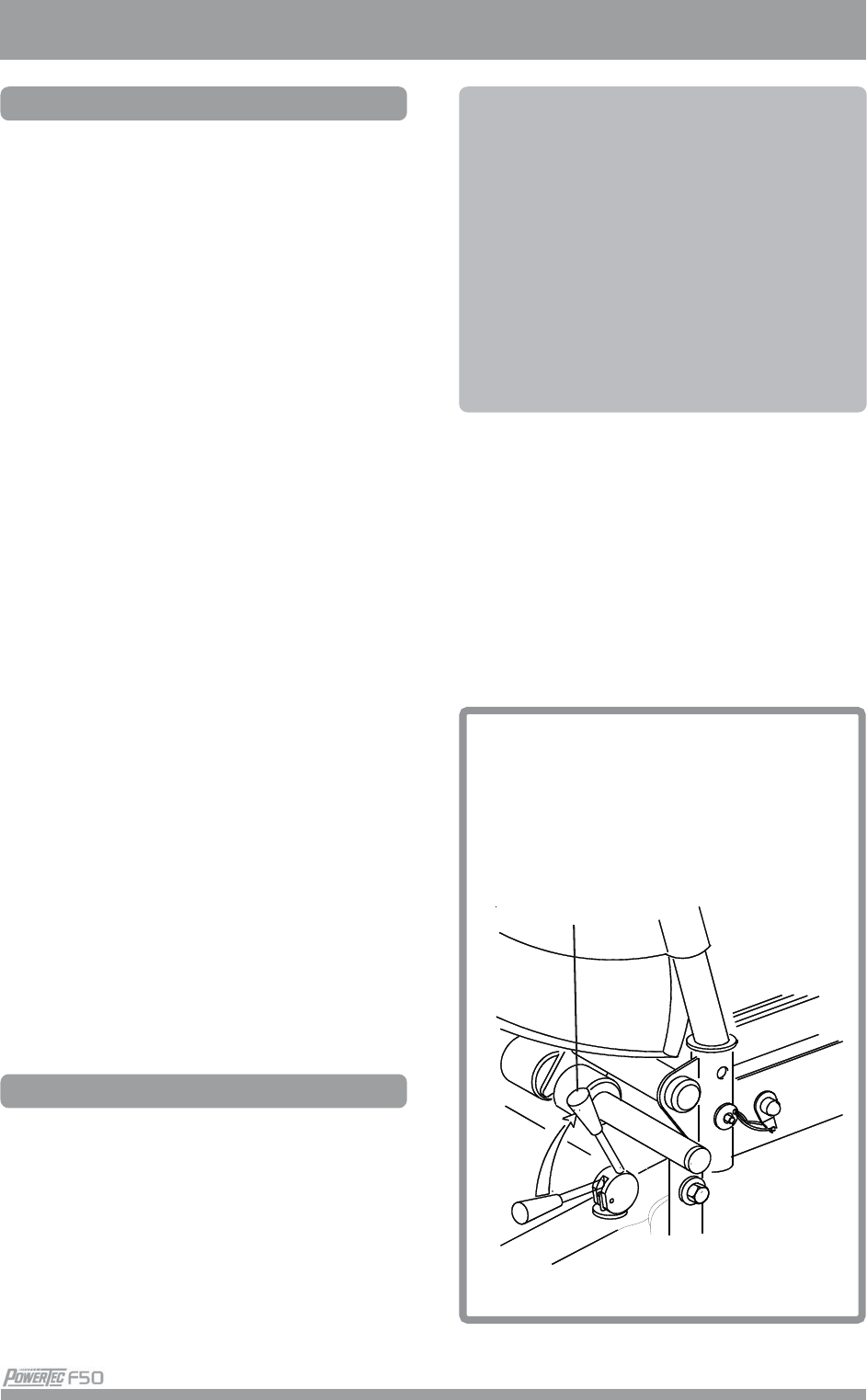
Issue 4 22
Kerb climber (Caution)
1 Please show the utmost
consideration for the other traffic
on the road. Remember that the
last thing a car or lorry driver
expects to see is a wheelchair
backing off the kerb into the road.
If in any doubt, do not risk
crossing the road until you are
certain that it is safe.
2 Always cross the road as quickly
as possible, there may be other
traffic.
3 Do not attempt to go up or down
more than a 10cm (4”) high kerb.
4 Do not attempt to use the kerb
climber on a series of steps.
5 Do not attempt high kerbs if on
steep slopes or cambers.
6 Do not attempt any kerbs in the
vicinity of drain covers, uneven
or gritty road surfaces.
7 Do not attempt to dismount a
kerb any higher than 5cm (2”) in
the forwards direction.
8 Do not mount or dismount kerbs
at an angle other than straight
on (90 degrees) to the edge of
the kerb.
9 Prior to climbing ensure your
legrests will clear the kerb.
Using your wheelchair
Emergency freewheel
This is a mechanism which enables
the drive to be disconnected in the
event of battery or other failure. This
may only be used in an emergency,
or if you need to manually push
your wheelchair (Fig. 25).
IN FREEWHEEL NEVER leave or
attempt to enter/dismount the chair.
Remember that the wheelchair is
heavy and you may not be able to
stop the wheelchair from rolling
away if you engage the freewheel
on sloping ground.
Fig. 25
Freewheel
position
It is not intended for permanent
use.
REMEMBER:
The chairs automatic braking
system will not work unless the
handle on the right hand side of
the chair is pushed down.
ALWAYS RE-ENGAGE THE
EMERGENCY FREEWHEEL
AFTER USE


















